Since Billy Beane, executive vice president of the Oakland A’s took an innovative approach (as chronicled in the film 'Moneyball') to player recruitment in Major League Baseball in 2002, there has been a drive in all sports to utilise data and information to be one step ahead of the opposition.
This blog aims to focus on how you can merge data from specialist technology to create a platform to manage, clean, visualise data and explore further insights.
There is now an abundance of data collected in sports to measure and track the performance levels of athletes and more importantly to support the decision making process;
-
Clubs collect medical, physiological, sleep and nutrition data as well as technical and subjective performance data.
-
Player movement tracking companies collect data using GPS, which provide distances, speed and other variables.
-
Match data companies collect objective performance data for passes, collisions, impacts and bowling speeds.
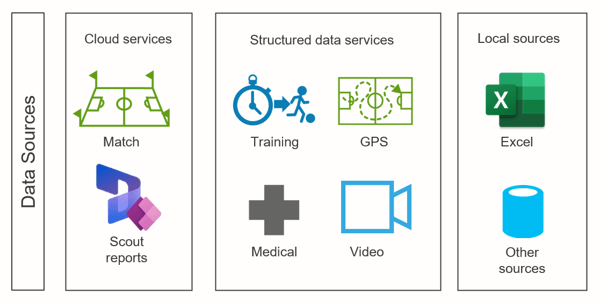
Examples of these data sources include match and training data, video, other structured data services, and local sources, which includes files stored on your device.
Specialist sources (GPS / Match data) provide an interface for collecting and exporting data. This takes a lot of time away from the analysts/scientists to produce reports. By automatically bringing all data into one platform they can gain greater insights, benchmark, and more importantly measure targets that support the sports’ philosophy.
So, what’s the main challenge?
Time. Whether it is baseball, basketball, football or ‘soccer’ for Americans, time is the biggest obstacle in such a fast paced, results driven industry. The overwhelming focus on wins or points restricts the amount of time personnel have to invest in the long-term development of technology.
To save time there are many performance-oriented, one stop shop solutions, focussing on data collection and visualisation. Often these systems are referred to as ‘Athlete Management Systems’ (AMS). Teams see this one-off cost as a quick win as this is a pre-packaged solution available across multiple devices and requires a minimal amount of staff management time from within the clubs. The biggest drawback is that every sports organisation uses the same output, thus forfeiting any competitive edge. Heavily dependent clients can also end up within a queue for support and development alongside other clients.
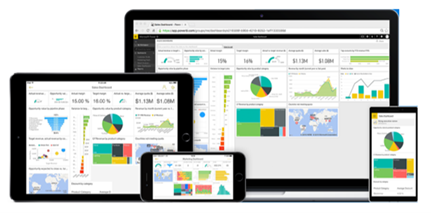
Technology moves at a pace comparable with Usain Bolt in his prime. Solutions quite quickly become obsolete with new platforms becoming readily available. A lot of one stop shop solutions store data as part of the package, but what happens when clubs want to move on? As owner of the data, you may receive an output of historical data, but often this data will be lost in time and not transferred into a usable platform.
By losing historical data, you lose the ability to measure improvements, compare players, squads and teams against their historical counterparts. In a football academy setting, historical data provides context for the development of an individual over a prolonged period. This is a powerful tool in further developing an individual or can be used as a learning tool for multi-disciplinary teams.
How do you prepare for change?
Like all great structures you have to build a solid foundation. The larger clubs with the budgets available have set the standard by storing and organising data in in-house databases. Visualisation and reporting tools are then used to present and interpret data to gain further insight. Whilst this approach is heavily dependent on access to specialist expertise, these specialist roles and consultants are quickly becoming the norm in the industry.
So, what is the solution?
AMS vs. bespoke? Many see the ideal solution as one or the other. Whilst there are pros and cons either way, choosing between one or the other is not the only solution.
One solution to add greater value to specialist systems and AMS is to automatically feed them into a single separate platform. Preferably cloud based and in-house so that access is not reliant on any third party.
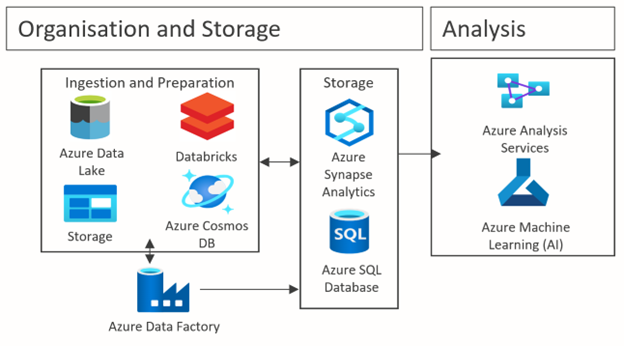
A centralised in-house system can help capture the right information at the right time and achieve a real-time view of medical, technical, physical and subjective data. Users can spend more time analysing, interpreting and adding context to data to deliver coach or management insight, instead of spending time searching through various systems, spreadsheets or reports.
The ideal solution should therefore provide an integrated process for flexibly capturing, storing, processing and visualising data across any device.
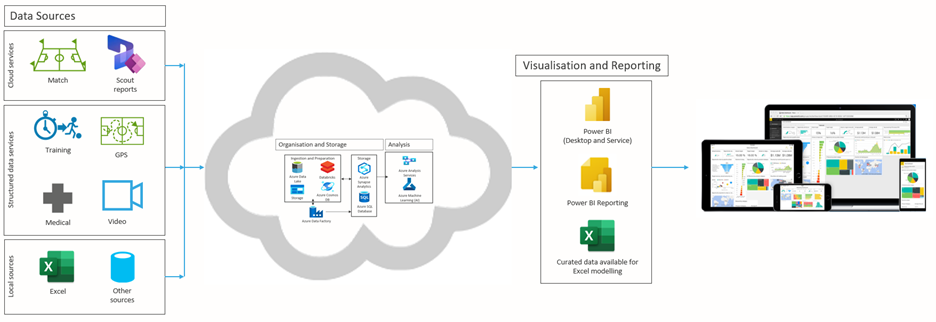
Using a centralised approach, reports can show a player's post game output, comparing physical, technical, medical and subjective ratings. Trends and variances can be added to visualise the single game, previous three games and season average, as well as an individuals’ ranking within a squad.
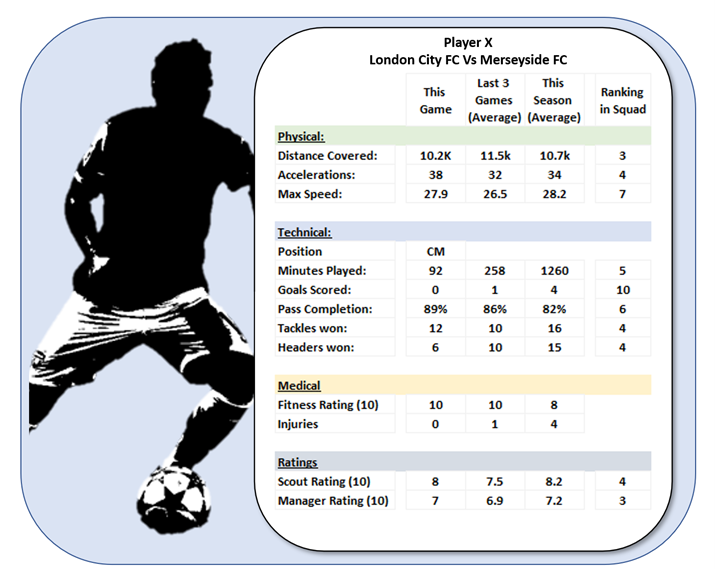
A major additional benefit of this in-house solution is to protect the historic data and maintain control over the outputs. Long term, when any data provider is changed, all historic data is retained in-house and new data can be easily combined.
There may be concerns that moving to a more advanced centralised technology system eradicates the personal perspective, the eye of a coach or a scout. But storing good quality data allows stronger insights and added context, which brings together the opinion of coaches and analysts.
Benefits
-
Automating tasks can bring significant time benefits. Automation can replace the usual cycle of mundane manual tasks, avoiding the duplication of collecting the same data for different audiences, thus allowing staff to spend more time on pitch or analysis.
- Machine Learning/Artificial Intelligence. The use of supervised and unsupervised machine learning algorithms helps model and predict key scenarios. Once the quality and amount of historic data is available, insights can include discovering patterns which affect individual and team performance. This can also be used in a scouting environment to highlight players of interest.
-
Clubs are still reliant on spreadsheets and paper-based collection, which opens up the risk of data being lost or stolen. With GDPR compliance a necessity, a secure cloud hosting system can strengthen security and limit the end user access on a role-based level.
-
Using cloud technology platforms is another way to reduce energy use and greenhouse gas emissions as these are more efficient than on-site data centres.
Many industries have already moved away from spreadsheets to integrated data solutions. For sports, the next step is to protect the future of data and information analysis. Whilst some sports are setting the standard, there exists an opportunity for many to catch up, thus allowing data to have more impact.
So now is the time to focus on using your data more effectively, gain further insights and affect team and individual performance, whilst advancing your competitive edge.
A note about the Author: Tilson Peter is a Data and Analytics Consultant with 13 years' experience working with performance data in an elite sports environment. During this time, Tilson was responsible for the processing, visualisation and distribution of performance data to specialist practitioners and management
-



